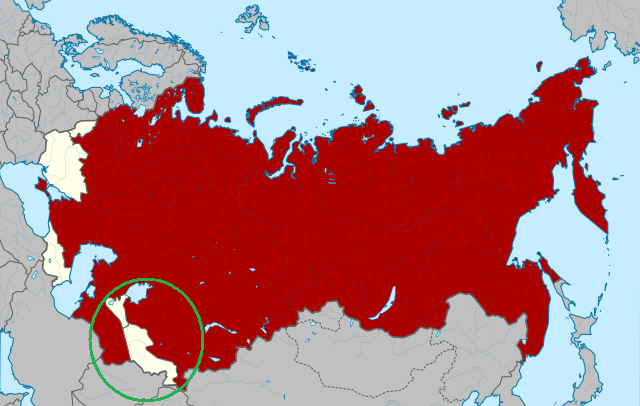USSR was created Dec 30 1922. I could only find a list of 4 SSR's: Russian, Belorussian, Ukranian, and Transcaucasian. The Central Asian region was largely a part of Russian SSR, or RSFSR at this time.
But it doesn't jibe with the map:
The red part is Russia. I put a green circle around the curious part. What is that tan/beige area inside Central Asia? What SSR does it belong to?

